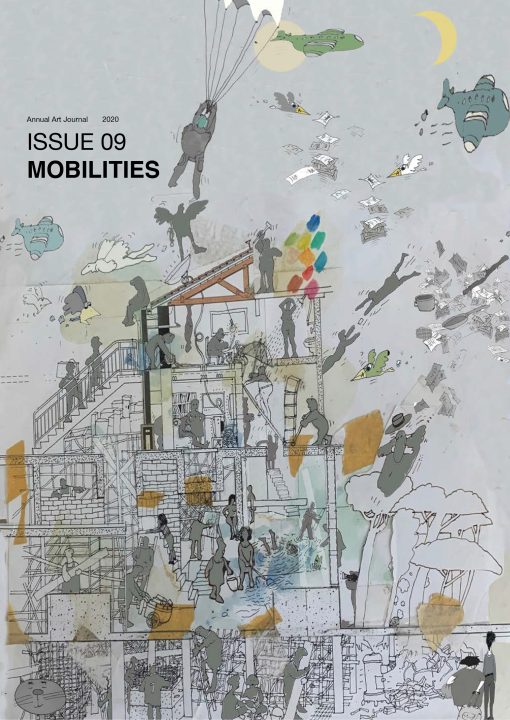By the time ISSUE 09 went to print, the coronavirus pandemic (COVID-19) had swept the world, bringing utter devastation to societies and economies. Unbound by any notion of nation-state, political ideology, belief or care, a virus vectorised communities and geographies infecting and affecting. As institutions around which communities had built and organised themselves since the 18th century, fumbled and crumbled, hope and ‘normal’ was scarce.
The anthropocenic revenge had arrived. As gods fell silent, politicians, community leaders and healthcare professionals scrambled to arrest the pillage. A new way of living, working and engaging had to be birthed as tacit lines between self/community, professional/personal and embodied/existential perforated rapidly giving way to anxiety. Redefining cultural norms and practices, communities quickly introduced new rituals in personal and social distancing: masking, isolating, avoiding and disinfecting. As instruments of care, they seemed antithetical to human socialisation (as evidenced by many who objected), yet it is very much part of the embodiment of the modern digital/virtual zone—distanced, isolated and disaffected. A stark realisation.
The pandemic became poignant to the core issue of this volume.
The study of mobilities over the centuries—of peoples, cultures, ideas, ideologies—spoke to the integral nature of the human condition to be constantly on the move, to be moved. Nature and its constitutive environments were prime conditions for the mobility of peoples as communities. Subsequently, as humans organised themselves, commerce, ideologies, religions and education became key movers of peoples as individuals. The human interest to discover, push and conquer one’s body and mind functions as a third condition of mobility. These three motivations anchored the manner in which concepts of migration and diaspora were historically understood as evidenced by discourses on mobilities steeped in continental philosophy and the social sciences proposing multiple paradigms such as Baudelaire’s flaneur (1863, 1964), Castells’ network society (1996); Simmel’s will to connect through financial circulation (1900, 2004); Bauman’s liquid modernity (1993); and Bourdieu’s field (1983); to cite a few, to appreciate and study mobility as an epistemological system. Amidst this, the modern world remains fraught with ‘normalised’ wars, ‘nationalised’ religions, ‘televised’ fears, ‘modern’ slaveries, ‘digital’ dreams and ‘technologised bodies’ compounded by heterotopic hyper-cities (defined by major airports and other transitory systems) remaining a main source of attraction to many—from pilgrims to refugees to corporate expatriates to the intrepid traveller. Writings by Urry (2007), Collier (2013) and others, point to the criticality of circulatory systems found in these hyper-cities such as London, Singapore, Hong Kong, New York, to allow multi-layered circulations to meet and coalesce, fostering an emergence of a new type of nation: a self-sustaining, ideologically pragmatic site of innovation and creativity and a place of the possible. Pandemics have remained in the margins of the evolution of modern society as advancements in public health and science kept them at bay. Just as 20th century health crises such as AIDS, SARS, MERS, etc. ravaged through hyper-cities arriving and departing through flight, so did COVID-19.
The beauty of society is its resilience. Despite the challenges, the world of ideas continues to remain viral and vital. The essays in this edition reflect this. From addressing politics, identities and self-migratory practices, writers explore mobilities through objects, temporality, embodiment, corporeality, aesthetics and through participatory practices—framing critique and appreciation of the multiple threads of movement. These perspectives form the basis on which one can ascertain the current station of contemporary society, not only through the lens of the present crisis but above, around and beyond it.


